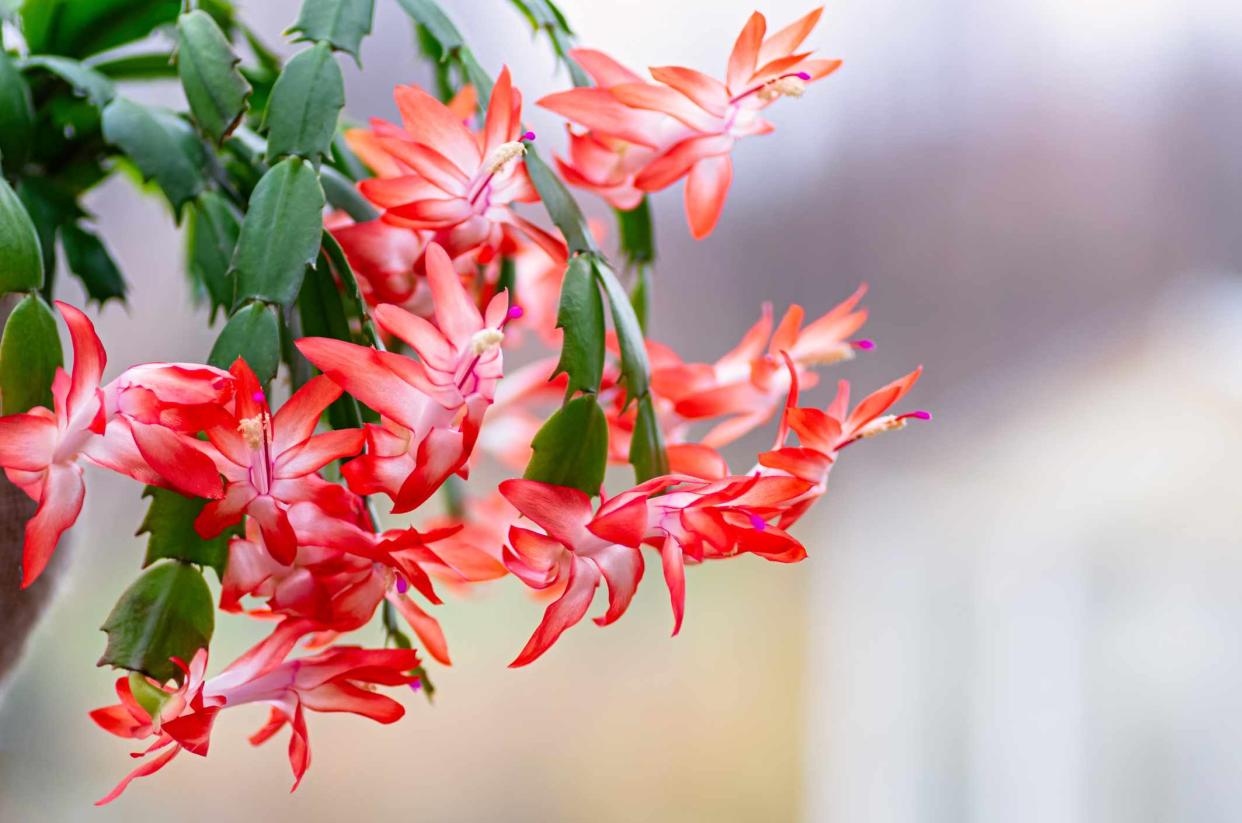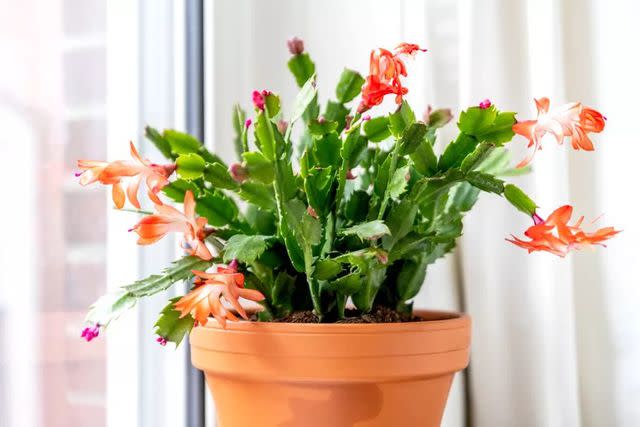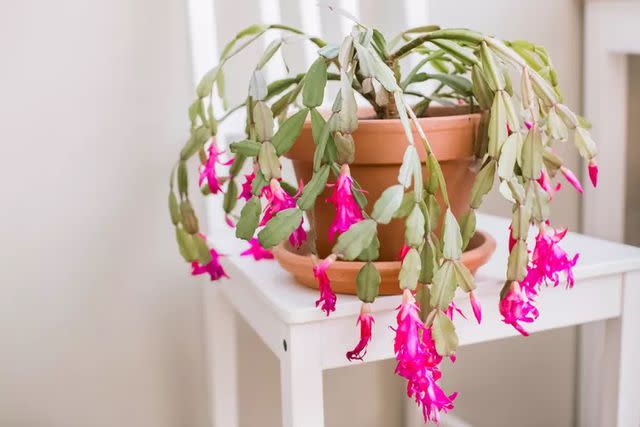Thanksgiving Cactus vs. Christmas Cactus: Here's How to Tell Them Apart

Elena Grishina / Getty Images
Cactus plants that bloom during the winter holidays are popular gifts and often part of family traditions. The Christmas cactus (Schlumbergera bridgesi) is fairly well known, but there is also a Thanksgiving cactus (Schlumbergera truncata), and even an Easter cactus (Rhipsalidopsis gaertneri).
These flowering cactus plants look kind of similar and have similar care nears, but there are some key differences to know to tell the Thanksgiving cactus and Christmas cactus apart.
How to Tell Thanksgiving Cactus and Christmas Cactus Apart
The shapes of the leaves are one of the easiest ways to tell them apart. A Thanksgiving cactus has serrated leaves with pointy appendages that slightly resemble crab claws. A Christmas cactus has more rounded leaves with scalloped edges.

The Spruce / Adrienne Legault
Thanksgiving cactusThe Thanksgiving cactus and Christmas cactus both flower indoors during the colder months, but the flowers are situated differently. On a Thanksgiving cactus, the flowers stand up slightly, and on a Christmas cactus the flowers hand down. Both plants have tubular shaped flowers with delicate pointed petals in shades of white, pink, and red, and sometimes peach or orange.

The Spruce / Kara Riley
Christmas cactusEven plant stores can confuse these two plants due to their similar appearance and rising popularity at the same time of the year. Be sure to look closely at the plant and its features to make sure you are really buying the one you want.
Thanksgiving Cactus
Leave edges are serrated with spiky center stems
Anthers are yellow
Flowers stand up slightly
Leaves have 2-4 sharp points
Christmas Cactus
Leaf edges are rounded and look scalloped
Anthers are pink to purple-brown
Flowers hang downwards
Leaf edges are smooth
Is Easter Cactus Different From Thanksgiving and Christmas Cacti?
There's another flowering cactus named for a holiday: the Easter Cactus (also known as Rhipsalidopsis gaertneri), and it is different from the Thanksgiving and Christmas cactus.
As the name suggests, the Easter cactus flowers in the spring months, usually beginning in late winter and blooming through March or April. The flowers are similar in color (shades of pale to bright pink) but the shape of the flowers is more star-like, with a double row of petals.
The leaves are more rounded like Christmas cactus, but they also have very tiny serrated edges.
The Easter cactus, unlike the Thanksgiving or Christmas cacti, is native to a non-tropical forest region in Brazil. This makes it somewhat more sensitive to moisture, and care must be taken to make sure it's not overwatered.
Flowering Cactus Care Tips
Despite being called "cactus," the Thanksgiving and Christmas cactus plants are actually succulents, and are native to tropical rainforests. They like indirect light, similar to their native habitat where they are often overshadowed part of the day by larger trees and vines.
For all of these flowering plants, a well-draining, rich potting soil is the best growing medium. A mix of organic soil and perlite works well, or a potting soil made for succulents.
Thanksgiving and Christmas cactus plants benefit from frequent watering to keep the soil evenly moist. Allow the soil surface to dry out between waterings. The Easter cactus, however, doesn't like to be too wet and care should be taken not to overwater.
How to Get a Flowering Cactus to Bloom
These flowering cactus plants require some changes in their care just before their blooming seasons. The Thanksgiving cactus blooms late fall through midwinter, and the Christmas cactus blooms early winter to midwinter. The Easter cactus blooms from late winter to early spring.
They all like warm temperatures (70°F to 75°F during the day, and 65°F at night) during their growing season, but after they form flower buds, they benefit from slightly cooler temperatures to help them bloom. Moving them to a night time location with temperatures between 50°F to 60°F for at least a week will help jumpstart their blooming period. This shift in temperatures might also be achieved by using space heaters during the day, or turning off heat in the room at night.
These holiday cacti also like to have some additional hours of darkness to facilitate blooming, so move them around to create the ideal light conditions. The Christmas cactus in particular benefits from this strategy. Giving these plants 12 to 14 hours of total darkness per day for at least three weeks before blooming will provide the best flowering results.
Keep your flowering cactus plants looking good by cleaning up and deadheading spent blooms right away. This also helps promote more blooms.
Read Next: 22 Popular Christmas Flowers and Plants
Read the original article on The Spruce.

